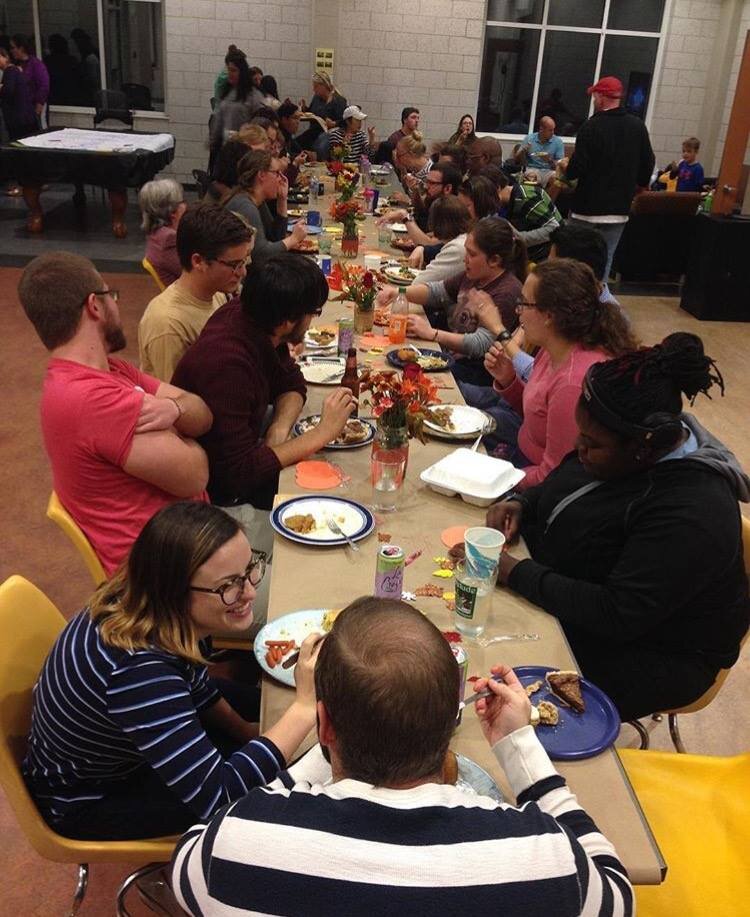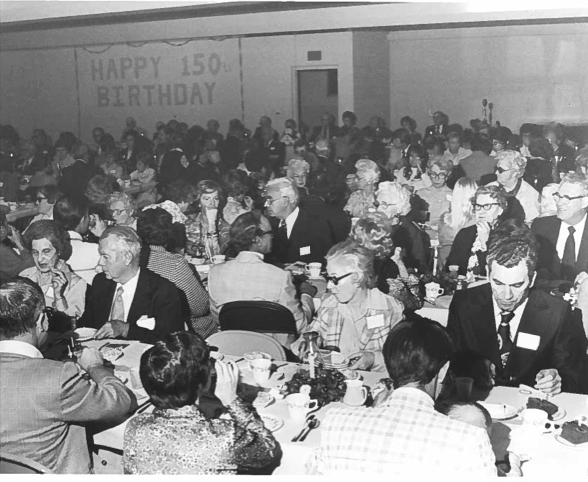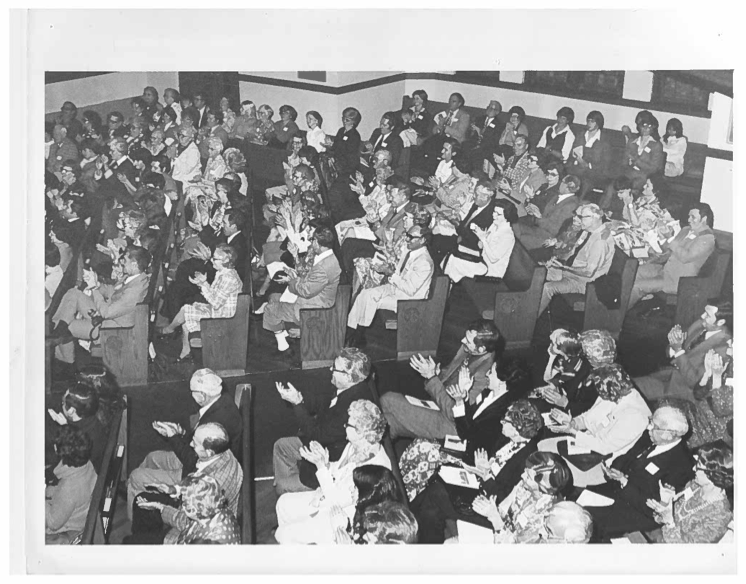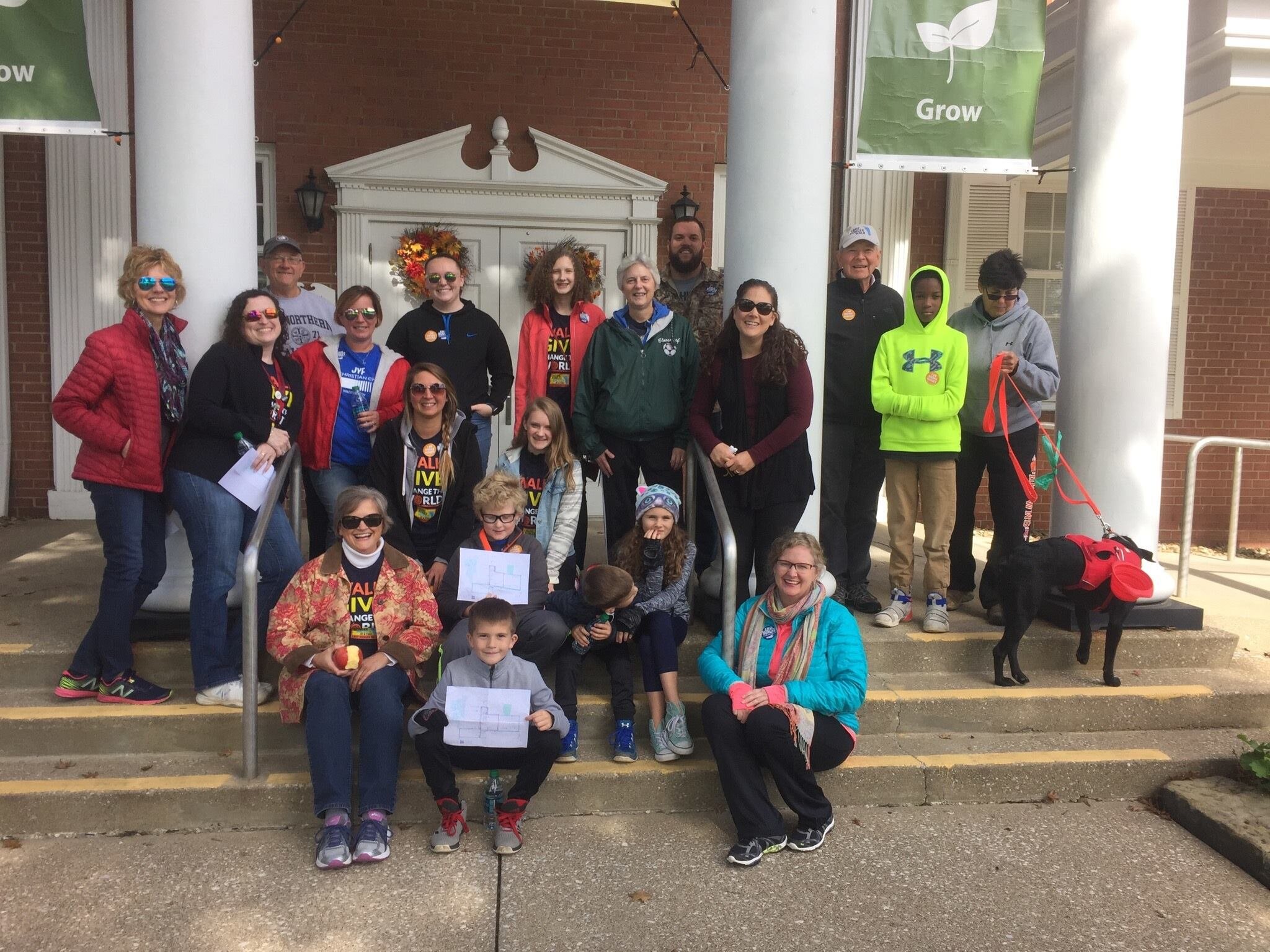Sermon 6/13/21
Listen along on our podcast [link], Facebook [link], or YouTube [link].
Theme: Tell Me a Story
Title: Stories That Shape Us
Scripture: Acts 10
Acts 10
There was a man in Caesarea named Cornelius, a centurion in the Italian Company. 2 He and his whole household were pious, Gentile God-worshippers. He gave generously to those in need among the Jewish people and prayed to God constantly. 3 One day at nearly three o’clock in the afternoon, he clearly saw an angel from God in a vision. The angel came to him and said, “Cornelius!”
4 Startled, he stared at the angel and replied, “What is it, Lord?”
The angel said, “Your prayers and your compassionate acts are like a memorial offering to God. 5 Send messengers to Joppa at once and summon a certain Simon, the one known as Peter. 6 He is a guest of Simon the tanner, whose house is near the seacoast.” 7 When the angel who was speaking to him had gone, Cornelius summoned two of his household servants along with a pious soldier from his personal staff. 8 He explained everything to them, then sent them to Joppa.
9 At noon on the following day, as their journey brought them close to the city, Peter went up on the roof to pray. 10 He became hungry and wanted to eat. While others were preparing the meal, he had a visionary experience. 11 He saw heaven opened up and something like a large linen sheet being lowered to the earth by its four corners. 12 Inside the sheet were all kinds of four-legged animals, reptiles, and wild birds.[b] 13 A voice told him, “Get up, Peter! Kill and eat!”
14 Peter exclaimed, “Absolutely not, Lord! I have never eaten anything impure or unclean.” 15 The voice spoke a second time, “Never consider unclean what God has made pure.” 16 This happened three times, then the object was suddenly pulled back into heaven. 17 Peter was bewildered about the meaning of the vision. Just then, the messengers sent by Cornelius discovered the whereabouts of Simon’s house and arrived at the gate. 18 Calling out, they inquired whether the Simon known as Peter was a guest there.
19 While Peter was brooding over the vision, the Spirit interrupted him, “Look! Three people are looking for you. 20 Go downstairs. Don’t ask questions; just go with them because I have sent them.” 21 So Peter went downstairs and told them, “I’m the one you are looking for. Why have you come?”
22 They replied, “We’ve come on behalf of Cornelius, a centurion and righteous man, a God-worshipper who is well-respected by all Jewish people. A holy angel directed him to summon you to his house and to hear what you have to say.” 23 Peter invited them into the house as his guests.
The next day he got up and went with them, together with some of the believers from Joppa. 24 They arrived in Caesarea the following day. Anticipating their arrival, Cornelius had gathered his relatives and close friends. 25 As Peter entered the house, Cornelius met him and fell at his feet in order to honor him. 26 But Peter lifted him up, saying, “Get up! Like you, I’m just a human.” 27 As they continued to talk, Peter went inside and found a large gathering of people. 28 He said to them, “You all realize that it is forbidden for a Jew to associate or visit with outsiders. However, God has shown me that I should never call a person impure or unclean. 29 For this reason, when you sent for me, I came without objection. I want to know, then, why you sent for me.”
30 Cornelius answered, “Four days ago at this same time, three o’clock in the afternoon, I was praying at home. Suddenly a man in radiant clothing stood before me. 31 He said, ‘Cornelius, God has heard your prayers, and your compassionate acts are like a memorial offering to him. 32 Therefore, send someone to Joppa and summon Simon, who is known as Peter. He is a guest in the home of Simon the tanner, located near the seacoast.’ 33 I sent for you right away, and you were kind enough to come. Now, here we are, gathered in the presence of God to listen to everything the Lord has directed you to say.”
34 Peter said, “I really am learning that God doesn’t show partiality to one group of people over another. 35 Rather, in every nation, whoever worships him and does what is right is acceptable to him. 36 This is the message of peace he sent to the Israelites by proclaiming the good news through Jesus Christ: He is Lord of all! 37 You know what happened throughout Judea, beginning in Galilee after the baptism John preached. 38 You know about Jesus of Nazareth, whom God anointed with the Holy Spirit and endowed with power. Jesus traveled around doing good and healing everyone oppressed by the devil because God was with him. 39 We are witnesses of everything he did, both in Judea and in Jerusalem. They killed him by hanging him on a tree, 40 but God raised him up on the third day and allowed him to be seen, 41 not by everyone but by us. We are witnesses whom God chose beforehand, who ate and drank with him after God raised him from the dead. 42 He commanded us to preach to the people and to testify that he is the one whom God appointed as judge of the living and the dead. 43 All the prophets testify about him that everyone who believes in him receives forgiveness of sins through his name.”
44 While Peter was still speaking, the Holy Spirit fell on everyone who heard the word. 45 The circumcised believers who had come with Peter were astonished that the gift of the Holy Spirit had been poured out even on the Gentiles. 46 They heard them speaking in other languages and praising God. Peter asked, 47 “These people have received the Holy Spirit just as we have. Surely no one can stop them from being baptized with water, can they?” 48 He directed that they be baptized in the name of Jesus Christ. Then they invited Peter to stay for several days.
Stories shape us - stories we tell, stories we hear or read, true stories and fictional ones. I’ve got a true one for you and I want to share it with you in the words of my beloved Grandmamma. When she was asked “what was your best date?” this is the story she told: “The date that stands out most to me was the one when the twins were about 4 and Shelby was 7. For some reason they got in their heads that they wanted to go on a date, so we did. Bob (Shelby’s dad) was Shelby’s date, Don (Grandaddy) was Cassie’s date and I was Foster’s date. We asked them where would you like to go on your date. They said dinner and dancing. Where would you like to go for dinner? Taco Bell. So that’s exactly what we did. We all got dressed up - the guys wore suits and ties, the gals wore dresses, and away we went to Taco Bell. We all had dinner, and there was music playing, and we danced. It was wonderful! It was the best date ever!”
A silly story and a meaningful memory. This is one of many stories that have shaped me: I learned that love looks like a meal around the dinner table. It doesn’t have to be fancy; it’s about being together. Community has always been really important to me, and one of the ways we build and nourish community is by sharing a meal. I’ve gathered around fancy tables with candlesticks and expensive wine. I’ve gathered around folding tables pushed together until there was enough room for everyone. Sharing food and stories, tears and laughter, taking the time to slow down and be together - that is what matters to me. As Pastor Sarah mentioned last week, one of the more recent community meals that I’ve been a part of was a Dialogue Dinner - and I had the chance to learn new things about folks and share a little of my own story too. I believe that there is something special about coming together over a meal. The silly stories that shaped me have brought me here, to gather at tables with you.
On Thursday I had lunch with Carolyn Kiser and we told each other stories. Carolyn told me about her kids and her grandkids, she told me about her husband Mel, and the impact that people like Martha Everhard have had in her life - even bringing her to this church! She told me about the goat and the lamb she had as a child as well as a pig named George. She told me about the little books she’d write for various occasions and people - like the one she made for her nursing class when they graduated, where she quoted a friend who said that if you’re a good enough listener, you can learn someone’s story in 5 minutes. Carolyn, who is a delightful conversationalist - I can attest since we stayed in the booth at Panera long after we’d finished eating - has found this to be true in her own life. She’s even heard the stories of strangers in grocery stores. Stories can bring us into relationship with each other, and isn’t that what matters most?
These stories aren’t the only ones I want to share with you this morning, though. Part of the delight of a sermon series like this is that we get to focus on the narratives in the Bible - stories that shape our faith and have been passed down from generation to generation. Today, we heard stories of Peter and Cornelius.
Katie read for us the story of Cornelius receiving a vision from God. Cornelius is a Gentile, not a Jew, though he has shown compassion to the Jewish people in his community. Cornelius responds to his vision with haste, following what God told him to do. But that is only the beginning of his story! The story of Cornelius is incomplete unless we also know the story of Peter. Peter, a Jew and one of Jesus’ disciples also has a vision from God. Unlike God’s vision to Cornelius, Peter’s vision includes a back-and-forth with God. Peter doesn’t understand but still follows the guidance of the Spirit.
This is where the story gets really interesting to me. Because the separate stories of these two people finally intersect. God has brought these people together for a reason - they can learn from each other’s stories. The story we read in Acts 10 also isn’t complete if we read Peter’s story by itself. Peter didn’t just have a vision out of context. God was preparing Peter to meet Cornelius. In fact, we read these stories together because without Cornelius, Peter’s vision doesn’t have nearly as much meaning. Peter’s vision by itself is theoretical. But God bringing Peter and Cornelius together is personal - it requires connection and sharing. And what does Peter share? The story of Jesus. Then the Spirit of God is in their midst and a communal transformation takes place. Cornelius and all of the gentiles present are baptized and the Jewish Jesus-followers now have a more expansive vision of the Kingdom of God. But the impact of this joining of stories doesn’t stop with the people present. This was a formative story for the burgeoning early church - it changed everything about their approach to evangelism. If God was already at work with people like the Gentiles, the Jewish believers didn’t need to insist that the Gentiles lived their faith exactly as the Jewish Jesus-followers did. The same purification rituals were not needed. God already took care of that because God is at work in the world in ways and places that we can’t always see or understand. But how do we know about how God is at work in the lives of others unless we listen to their stories?
Stories can be a powerful way for God to reach us and others. And every place and every person has a story. Sometimes the stories we hear and the stories we tell don’t paint the whole picture of who we are or what God is doing. Stories can sometimes even lead to stereotypes because our one story of a person or a place is what we think of rather than seeing the whole picture. When we only see someone or something one way, we can lose the opportunity for connection over our common humanity. What if Peter had only heard the story of Cornelius as a Gentile and a Centurion? He wouldn’t know that Cornelius was a faithful follower of God and maybe that transformational encounter wouldn’t have happened. But Peter chose to trust God - and Cornelius - he chose to trust that there was more to the story than that one marker of Cornelius’ identity.
The common phrase “there’s two sides to every story” gets it partially right - I think there are even more than two sides. Even if we share a common experience, we won’t necessarily tell our stories the same way. Consider the gospels for example: Matthew, Mark, Luke, and John tell many of the same stories, but we don’t pick one and get rid of the rest just because they’re repetitive. Take the story of Jesus’ birth for example: Matthew tells of the Wise Men visiting Jesus while in Luke we read about shepherds, not wise men. Imagine Search for the Christ Child if we only used the gospel of Matthew. The story would feel incomplete.
That’s why I think sharing our own stories is so important. Each one of us has stories to tell and those stories make up the story of who we are as a community. If our stories shape us, which I believe they do, our past, present, and future are all tied together. The stories of our faith in scripture still influence the life of the church and the lives of Christians today. And the story continues - it’s not just the stories written in scripture that influence our faith and our community.
Because I believe this to be true, I’ve been taking some time to learn about some of the stories of this church and this town. There is a rich history here, and the stories of the past have shaped our community in the present. It’s important to me to hear many of the stories of this place and these people so that my understanding of this community is deeper and more true. Thanks to Joe Arpad and access to the church archives, I’ve been able to witness part of the story of this church.
In a pamphlet for a Service of Rededication in June, 1955, I read the following: “In 1820 Obadiah Newcomb, a Baptist preacher moved here, became converted to the Campbellite teaching and with a small group started the first congregation of Disciples in 1828. There were only ten of them, and their names, though often recited, should be repeated here: Obadiah Newcomb, Satira Newcomb, Matilda Newcomb, P. Butler, John and Sarah Bunelle, Victory Clark, Samuel Queen, A.B. Queen and Polly Eyles. Itinerant preachers made visits here pretty continuously and in 1829 William Hayden, then assisting Walter Scott in the Western Reserve, came, and in 1833 the great Alexander Campbell preached to the Wadsworth group. The meeting was held in the Eyles barn on the Akron road, and the outpouring was tremendous and conversions multiplied. Meetings continued in school houses, one on the town line road and one in the village.
In 1842 the first church building was erected--a single room meeting house. The architect and the pioneer founder, Obadiah Newcomb, lived just long enough to see his growing flock at home there… in 1845, according to records of the time, the active membership had grown to 65… It is said that it was about 1852 when James A. Garfield first preached in our church. Later, when recruiting for his Civil War regiment, he spoke from our church steps, as was his custom throughout the district…”
It continues on to document the early 1900s when it says, “a brighter vision had taken hold” and additions were made to the church.
It concludes, of course, with the rededication of the church building in 1955. The last paragraph says this, “And so, with the past and present before our view, what shall be said of the times to come? In all humility, we have shown that under God, we can accomplish anything that we truly set our hearts upon; and if a prophecy is in order by one who has had some part in much that is here written down, it is this-- that at the next time of writing our children’s children will date our present achievement as only another beginning, a shining moment like that Biblical “light of dawn, that shineth more and more unto the perfect day.”
Attribution is made to A.B. Cannon for compiling and writing this history of the church.
Since then, even more change and growth has occurred. 1966, for example, saw the dedication of the Education wing, then called the “Sunday School Building.” But even more important than the changes that have been made to this building are the people who have shaped this church. The Bible is full of genealogies that we often skip over - name after name after name. But they are included for a reason - the people of our past influence our future.
And this church is no different. Though I know this list is not all encompassing, here is a sort of genealogy of our church family - Philip L. Gould, Martha Everhard, Jim Singleton, Leslie Critchfield, Heather Held, Peggy Rowe, Anne Jurey, Jonathan Rumberg, Cynthia Klingermier, Nancy Dunn, Karen Rule, Andrea Orchard, Megan Kolesar, Kate Gray, Robin Myers, and Sarah West are some of the folks who have guided this church spiritually. Randy and Karen Leatherman, Maxine Trent, Melba Powers, Barb Cleckner, Rod Livingston, Jane Ross, Marianne Cline, Donna Kronander, Andrea Orchard, Zig Novak, and Scott Marsh have blessed us with their musical leadership. Fannie Kaufman, Jan Dye, Lana Landis, Earl Joachim, Laura Thomas, and Donna Kronander are among those who have kept this church in order.
And that long list of faithful servants of this church doesn’t even include everyone - finance and building and office and custodial staff, board members and elders and deacons and ushers and sunday school teachers and other lay leadership, and of course our congregants, are every bit as important. If I said every one of your names and leadership roles we’d be here all day at least. Because it’s you - you people who give your time and your gifts and your heart to this church - you are a crucial part of our story.
One of the things that I noticed as I absorbed all of this history is that this church has never just been a building. It’s the people who have made this church what it is today - and I recognized many names dating back to the early days of this church. This congregation is made up of people who have been here for generations. And, of course, it is also made up of some newer folks, like me. And that’s a good thing - because the church needs us all - the long-time members and the new ones, the doubters and the firm believers. And I think that this is perhaps one of the most important times for us to share and listen to stories.
When I think about continuing the vision of First Christian Church, I think about how Peter needed Cornelius’ vision just as much as he needed his own. In the same way, this church and this community are made up of all sorts of people, each with our own stories to tell and visions for the future. Community is complex because people are complex - each of us shaped by people and things and places that are different from one another. The key to navigating our complexity, I think, is to name it and recognize it. To tell our stories and to listen to the stories of others with empathy and compassion. And in doing so, guided by the Holy Spirit, we shape the future of this church and this community.
















